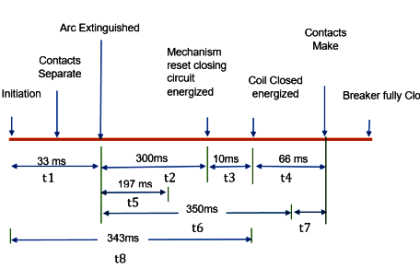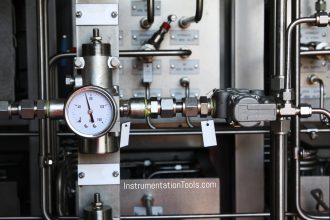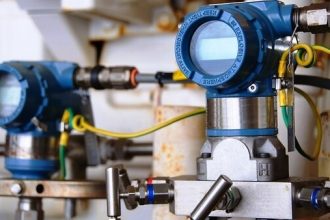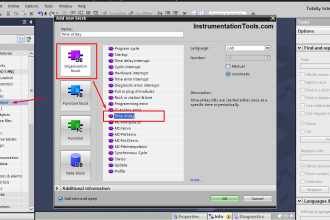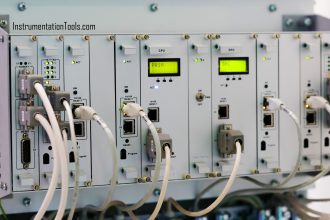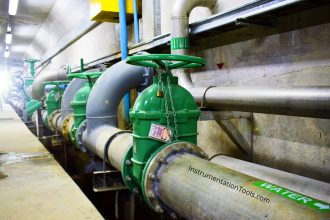We provide you the latest 100 multiple choice questions and answers on motors and generators for electrical and instrumentation engineers.
Motors and Generators
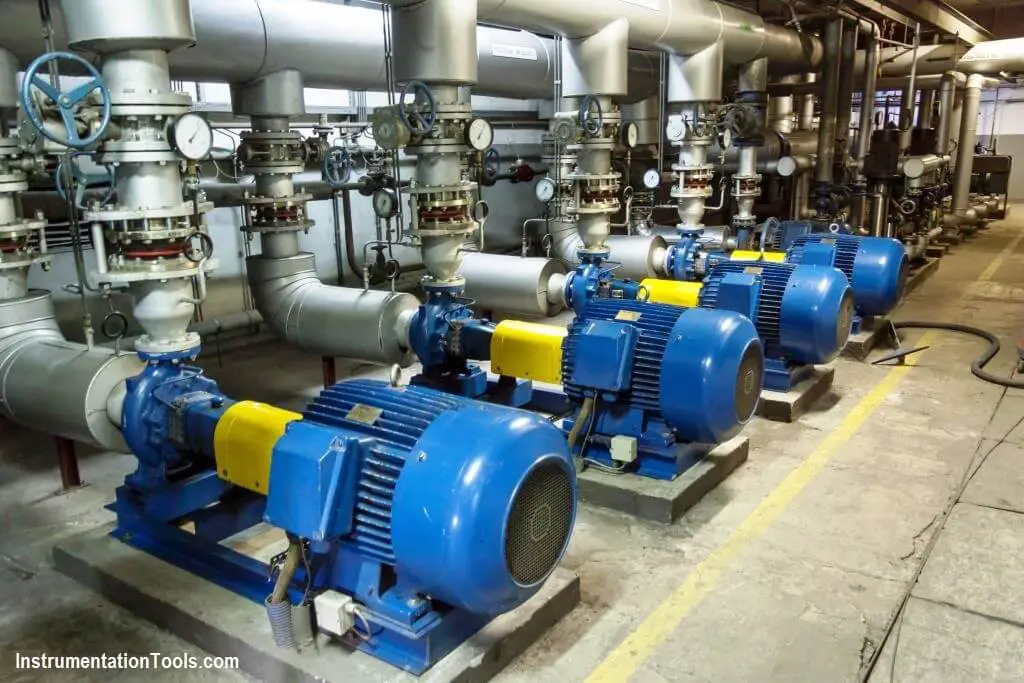
Find the sample 25 questions from the motors and generators quiz. Click on the below start button to get complete 100+ questions with answers.
Question 1:
A large AC motor has a maximum ambient temperature rating of 40°C.
Which one of the following will occur if the motor is continuously operated at rated load with an ambient temperature of 50°C?
A) Accelerated breakdown of the motor winding insulation, leading to an open circuit within the motor windings.
B) Accelerated embrittlement of the motor windings, leading to a short circuit within the motor windings.
C) Accelerated breakdown of the motor winding insulation, leading to a short circuit within the motor windings.
D) Accelerated embrittlement of the motor windings, leading to an open circuit within the motor windings.
Question 2:
When a motor-driven centrifugal pump was started, the motor ammeter reading immediately increased to, and stabilized at, many times the normal operating value.
Which one of the following describes a possible cause for the ammeter response?
A) The pump was started with a fully open discharge valve.
B) The pump shaft separated from the motor shaft upon start.
C) The pump was started with a fully closed discharge valve.
D) The pump shaft seized upon start and did not rotate.
Question 3:
The main generator is supplying 300 MVAR to the power grid with a 0.85 power factor.
What is the approximate MW load on the main generator?
A) 186 MW
B) 484 MW
C) 569 MW
D) 353 MW
Question 4:
The number of starts for an electric motor in a given period of time should be limited because overheating of the __________ can occur due to the __________ counter electromotive force produced at low rotor speeds.
A) windings; high
B) windings; low
C) commutator and/or slip rings; low
D) commutator and/or slip rings; high
Question 5:
Which one of the following will result from the prolonged operation of an AC induction motor with excessively high stator temperatures?
A) Decreased electrical resistance to ground due to breakdown of winding insulation.
B) Increased electrical current demand due to reduced counter electromotive force.
C) Increased electrical resistance to ground due to breakdown of winding insulation.
D) Decreased electrical current demand due to reduced counter electromotive force.
Question 6:
A cooling water pump is being driven by an AC induction motor.
Which one of the following describes how and why pump motor current will change if the pump shaft seizes?
A) Decreases due to decreased pump flow rate.
B) Increases due to decreased counter electromotive force.
C) Increases due to decreased pump flow rate.
D) Decreases due to increased counter electromotive force.
Question 7:
A 125 VDC motor is rated at 10 KW.
What is the current rating for the motor?
A) 4.6 amps
B) 8.0 amps
C) 80.0 amps
D) 46.2 amps
Question 8:
The starting current in a typical AC induction motor is usually much higher than the full-load running current because
A) starting torque is higher than full-load running torque.
B) rotor current during start is too low to generate significant counter electromotive force in the stator.
C) starting torque is lower than full-load running torque.
D) rotor speed during start is too low to generate significant counter electromotive force in the stator.
Question 9:
A diesel generator (DG) is supplying an electrical bus that is connected to an infinite power grid.
Assuming DG terminal voltage and bus frequency do not change, if the DG governor setpoint is increased from 60 Hz to 60.1 Hz, DG KVAR will be __________; and DG amps will be __________.
A) higher; the same
B) the same; higher
C) the same; the same
D) higher; higher
Question 10:
The frequency of starts for large AC motors should be limited to prevent excessive
A) arcing and degradation of motor breaker contacts.
B) heat buildup within the motor
C) wear of pump thrust bearings.
D) torsional stresses on the motor shaft.
Question 11:
An axial flow ventilation fan is being driven by an AC motor.
The fan is operating at 90 percent of the rated flow rate with its discharge damper partially closed.
How will the fan motor current change if its discharge damper is fully opened?
A) The motor current will decrease in accordance with the centrifugal pump laws.
B) The motor current will decrease, but not in accordance with the centrifugal pump laws.
C) The motor current will increase in accordance with the centrifugal pump laws.
D) The motor current will increase, but not in accordance with the centrifugal pump laws
Question 12:
Which one of the following is the primary reason for limiting the number of motor starts in a given time period?
A) Minimizes the pitting of contacts in the motor breaker.
B) Prevents overheating of the motor windings.
C) Minimizes axial stresses on the motor bearings.
D) Prevents excessive torsional stresses on the motor shaft.
Question 13:
A radial-flow centrifugal cooling water pump is being powered by a 480 VAC induction motor.
If the motor input voltage slowly decreases from 480 VAC to 450 VAC, the pump flow rate will __________; and the motor current will __________. (Assume the motor does not stall.)
A) decrease; increase
B) decrease; decrease
C) remain the same; decrease
D) remain the same; increase
Question 14:
If a locked rotor occurs on an operating motor-driven pump, motor amps will
A) increase due to the decreased rotor speed.
B) increase due to the decreased pump flow rate.
C) decrease due to the decreased pump flow rate.
D) decrease due to the decreased rotor speed.
Question 15:
The frequency of start/stop cycles for an electrical motor is limited to prevent
A) excessive cycling of the motor breaker.
B) overheating the motor windings.
C) excessive shaft torsional stresses.
D) overheating the motor supply bus.
Question 16:
An AC generator is supplying an isolated electrical system with a power factor of 1.0.
If generator voltage is held constant while real load (KW) increases, the current supplied by the generator will increase in direct proportion to the __________ of the change in real load.
(Assume the generator power factor remains constant at 1.0.)
A) amount
B) square
C) cube
D) square root
Question 17:
What is the primary reason for limiting the number of starts for an electric motor in a given period of time?
A) Prevent overheating of the windings due to shorting within the stator.
B) Prevent overheating of the windings due to high starting currents.
C) Prevent rotor damage due to excessive cyclic stresses on the shaft.
D) Prevent rotor damage due to excessive axial displacement of the shaft.
Question 18:
A diesel generator (DG) is supplying both KW and KVAR to an electrical bus that is connected to an infinite power grid.
Assuming bus voltage does not change, if the DG voltage regulator setpoint is decreased slightly, DG KW will __________; and DG amps will __________.
A) decrease; remain the same
B) decrease; decrease
C) remain the same; decrease
D) remain the same; remain the same
Question 19:
Which one of the following is a characteristic of a typical AC induction motor that causes starting current to be greater than running current?
A) The rotor magnetic field induces an opposing voltage in the stator that is proportional to rotor speed.
B) After the motor starts, resistors are added to the electrical circuit to limit the running current.
C) The rotor does not develop maximum induced current flow until it has achieved synchronous speed.
D) A large amount of starting current is required to initially establish the rotating magnetic field.
Question 20:
Which one of the following describes the effects of field current changes on generator excitation and power factor with the generator connected to an infinite power grid?
A) Decreasing field current increases excitation and shifts power factor from lagging toward leading.
B) Decreasing field current increases excitation and shifts power factor from leading toward lagging.
C) Increasing field current increases excitation and shifts power factor from lagging toward leading.
D) Increasing field current increases excitation and shifts power factor from leading toward lagging
Question 21:
Continuous operation of a motor at rated load with a loss of required cooling to the motor windings will eventually result in
A) breakdown of the motor insulation and electrical grounds.
B) cavitation of the pumped fluid.
C) phase current imbalance in the motor and overspeed trip actuation.
D) failure of the motor overcurrent protection devices.
Question 22:
Which one of the following will provide the initial motor protection against electrical damage caused by gradual bearing failure?
A) Overcurrent trip relay
B) Thermal overload device
C) Undervoltage device
D) Underfrequency relay
Question 23:
Which one of the following AC induction motor events is characterized by maximum rotor slip and a motor current five to six times full-load current?
A) Motor overloaded by 50 percent
B) Motor operating at breakdown torque
C) Ground in motor windings
D) Starting of the motor
Question 24:
Motor winding temperature will be reduced by
A) limiting the number of motor starts allowed in a given time period.
B) increasing the reactive current flow in the stator windings.
C) decreasing the voltage supplied to the motor during full-load operation.
D) decreasing the number of stator poles during the start sequence.
Question 25:
To minimize the duration of high starting current, an AC induction motor should be started __________ to __________ the stator counter electromotive force.
A) partially loaded; quickly establish
B) unloaded; delay
C) unloaded; quickly establish
D) partially loaded; delay
Click on the below button to launch the Quiz.
Answers available in the Quiz.
Share your feedback on the quiz
If you liked this article, then please subscribe to our YouTube Channel for Electrical, Electronics, Instrumentation, PLC, and SCADA video tutorials.
Next Quizzes:
- PLC Questions & Answers
- Industrial Instrumentation Quiz
- Measurements & Instrumentation
- Process Control Test Questions
- Electronic Devices & Circuits



